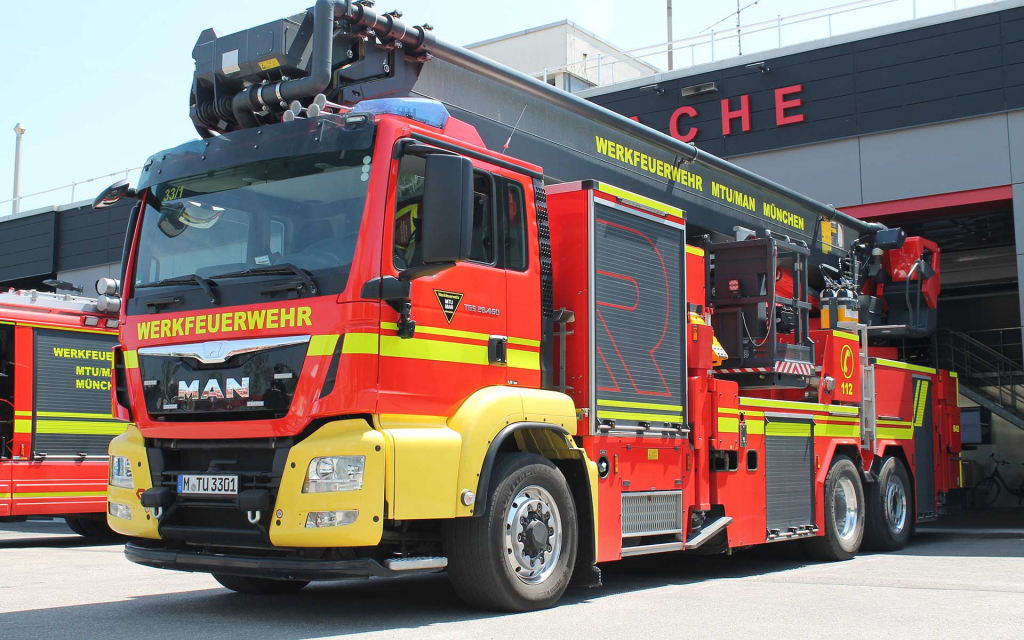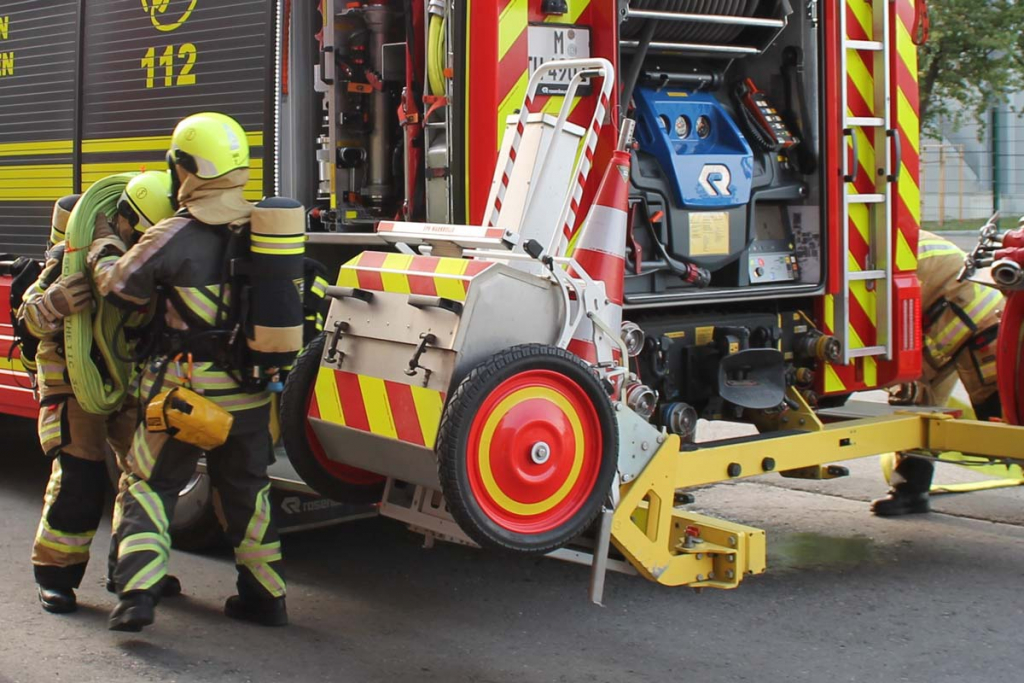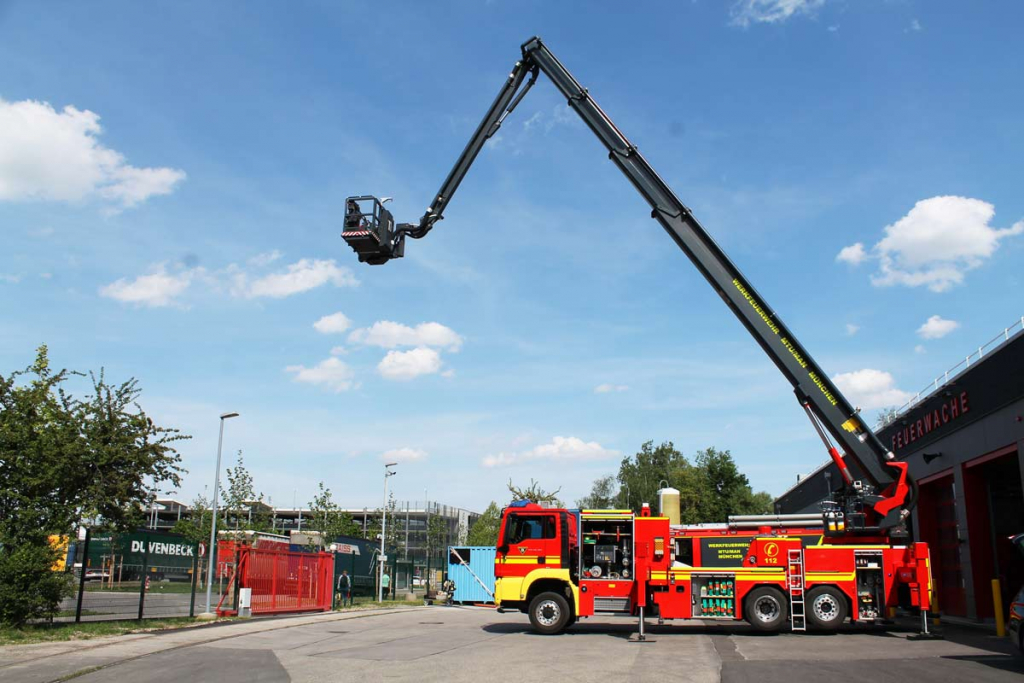
Always ready
So you think firefighting is just a matter of switching on the blue light, extinguishing the fire and returning to the station? Think again! The daily routine of the joint MTU and MAN plant fire brigade is far more complex than that. Whatever the task, the state-of-the-art MAN fire service vehicles always play a key role.
Everything comes together at the operations control centre. There are digital maps flickering on screens, which outline the plant premises of MTU Aero Engines AG and MAN Truck & Bus SE Munich. In fact, MAN and MTU share the same plant boundary. The joint fire station of the MTU/MAN Munich plant fire brigade is located right on the boundary. ““bout 3000 operations a year are coordinated and successfully handled from here,” says Markus Schmid, Head of Fire Safety and Hazard Prevention. These operations include fire prevention, technical assistance, operations involving hazardous materials, security patrols, rescue services and occupational health care. In addition, if there is a particularly high volume of incidents in the surrounding area, this plant fire brigade also provides support to nearby control centres.
“The Munich Integrated Control Centre coordinates the fire and rescue services in the area. If an accident happens and colleagues see that we can be the first on the scene, we’re alerted. If necessary, our emergency paramedics from the fire brigade take care of the patient together with the emergency doctor at the scene,” Markus Schmid explains. The two companies have operated a joint plant fire brigade since 1963 and their requirements for fire protection and hazard prevention are very similar. The traditional fire brigade activities of the past – switching on the blue light, extinguishing the fire and driving back – make up just a small part of the work. Only four per cent of operations are now traditional firefighting missions. “The demands on modern fire brigades have changed enormously,” Markus Schmid explains.

The strategy is to act rather than react and is underpinned by hazard prevention. This means that as many emergencies as possible should be prevented. For example, this can be achieved by implementing preventive fire protection measures or security guards. IIn addition, there are now almost 35,000 monitoring sensors, which are distributed around the two company premises in the form of fire and gas detection systems. Each one is connected to the alarm centre. “Sophisticated system regulates the maintenance and functional tests,” explains Schmid.
Five minutes to reach anywhere on the factory premises
Hardly anything happens on the factory premises without the fire brigade being involved. What needs to be considered with regard to the new hazardous substance requirements? Does the aerial rescue platform extend up to the top floor of a new building? And what does all this mean for escape routes, both during the construction phase and afterwards? The plant fire brigade has five minutes to reach any location on the plant premises from when the emergency call is received at the operations control centre.
“t’s a matter of seconds, and I don’t mean that in the proverbial sense at all.”
The general renovation of the MTU/MAN fire station, which partly stands on walls dating back to the 1930s, will be completed by the end of 2023. The main areas concerned will be workshops, the operations control centre and the vehicle depot. The brief was to always have up-to-date facilities. Accordingly, the construction of a new disinfection and hygiene hall was also part of the conversion package. “Smoke from fires can contain carcinogenic substances that are deposited on equipment, vehicles and medical supplies,” says Schmid. The new hall can also be professionally cleaned with the key purpose of minimising risk. In addition, the team obtained new social areas to make it easier for women to work for the fire brigade.
The two highlights from the ultra-modern vehicle fleet
MAN TGS 26.440
Aerial rescue platform 42 – for fires on higher floors or, for example, for assistance in large industrial buildings:
Powered by a 420 hp engine, the vehicle’s gross vehicle weight rating is 26 tonnes. When the aerial rescue platform is extended, it measures 42 metres. The rescue cage at the end is designed for a maximum load of 500 kilograms, and up to 3800 litres of extinguishing water per minute can be supplied by the electric extinguishing monitor. A fixed firefighting centrifugal pump delivers this water upwards at eight bars of pressure via a pipeline installed on the telescopic mast. Other permanently installed features are a 1200 litre extinguishing water tank and a foam agent tank with a capacity of 200 litres.

MAN TGM 18.340 4×2 BL

Universal auxiliary firefighting vehicle – one of the most versatile firefighting vehicles ever produced. It takes into account the shift in the range of operations from extinguishing to technical assistance.
The universal auxiliary firefighting vehicle weighs up to 18 tonnes. The fact that the comparatively small vehicle is nevertheless so heavy is due to its technical assistance equipment. This includes, for example, spreaders, cutters, lifting bags, outriggers, a rescue platform, a multi-purpose hoist, a permanently installed 60 kVA generator and various extinguishing agents (water, foam and CO2). The different extinguishing agents can be deployed via the pump control panel at the rear. In addition, the water cannon on the roof can even be operated remotely while driving.












